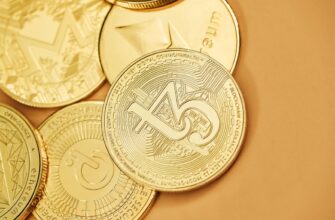- Why Buy Bitcoin with Zelle?
- What You’ll Need Before Starting
- Step-by-Step: Buying Bitcoin Using Zelle
- Pros and Cons of Using Zelle for Bitcoin
- Advantages:
- Risks:
- Critical Safety Measures
- Top Zelle-Friendly Bitcoin Platforms
- FAQ: Buying Bitcoin with Zelle
- Is buying Bitcoin with Zelle legal?
- Why did my bank block my Zelle payment?
- How long do Zelle Bitcoin transactions take?
- Can I reverse a Zelle payment if scammed?
- What’s the maximum I can buy with Zelle?
- Are fees lower than credit cards?
Why Buy Bitcoin with Zelle?
Zelle has become a popular payment method for Bitcoin purchases due to its instant bank transfers and widespread availability in the US. Unlike credit card transactions that often incur high fees, Zelle offers low-cost transfers between bank accounts. However, it’s crucial to understand that most cryptocurrency exchanges don’t directly accept Zelle. Instead, you’ll typically use peer-to-peer (P2P) platforms where you pay individual sellers via Zelle in exchange for Bitcoin. This guide covers everything from setup to security.
What You’ll Need Before Starting
- Zelle-Enabled Bank Account: Linked to a U.S. bank or credit union
- Cryptocurrency Wallet: Non-custodial wallet (e.g., Exodus, Trust Wallet) to store your Bitcoin securely
- Verified Exchange/P2P Account: Platforms like Paxful, LocalBitcoins, or Binance P2P
- Government ID: For exchange verification (KYC requirements)
Step-by-Step: Buying Bitcoin Using Zelle
- Create Accounts: Sign up on a P2P platform and complete identity verification. Set up your Zelle via banking app.
- Find a Seller: Search for “Zelle” sellers on the P2P marketplace. Filter by reputation score (aim for 95%+ positive reviews).
- Initiate Trade: Select a seller, enter the Bitcoin amount, and lock the transaction. The platform holds BTC in escrow.
- Send Payment via Zelle: Transfer the exact amount to the seller’s registered Zelle address within the time limit (usually 15-45 mins).
- Confirm Receipt: Seller releases Bitcoin from escrow to your exchange wallet once payment clears.
- Transfer to Personal Wallet: Move Bitcoin off the exchange immediately for enhanced security.
Pros and Cons of Using Zelle for Bitcoin
Advantages:
- Instant bank transfers (funds arrive in minutes)
- Lower fees than credit/debit card purchases
- No chargeback risks for sellers
Risks:
- High scam potential (fake sellers, payment disputes)
- No buyer protection – transactions are irreversible
- Bank account freezing if flagged for crypto activity
Critical Safety Measures
- ✅ Verify Sellers: Check trade history, ratings, and completed transactions
- ✅ Never Pay Outside Escrow: All payments should go through the P2P platform’s protected system
- ✅ Use Transaction Notes: Include the trade ID in Zelle payment references
- ✅ Start Small: Test new sellers with transactions under $100
- ❌ Avoid Direct Deals: Reject sellers requesting WhatsApp or Telegram communication
Top Zelle-Friendly Bitcoin Platforms
- Paxful: Leading P2P marketplace with 350+ payment methods
- LocalBitcoins: Long-established platform with escrow protection
- Binance P2P: Low fees but requires full KYC verification
FAQ: Buying Bitcoin with Zelle
Is buying Bitcoin with Zelle legal?
Yes, but banks may restrict transactions. Always report crypto gains on taxes.
Why did my bank block my Zelle payment?
Many banks prohibit crypto-related transfers. Contact support stating it’s for “goods/services” – never mention cryptocurrency.
How long do Zelle Bitcoin transactions take?
Zelle payments clear in minutes, but seller BTC release varies. Most trades complete within 30 minutes.
Can I reverse a Zelle payment if scammed?
No. Zelle payments are irreversible. Only use platform escrow and dispute systems for protection.
What’s the maximum I can buy with Zelle?
Zelle limits vary by bank ($500-$5,000 daily). Seller limits on P2P platforms also apply.
Are fees lower than credit cards?
Yes. Typical fees are 1-3% vs. credit card’s 5-10%. Sellers may offer discounts for Zelle payments.








